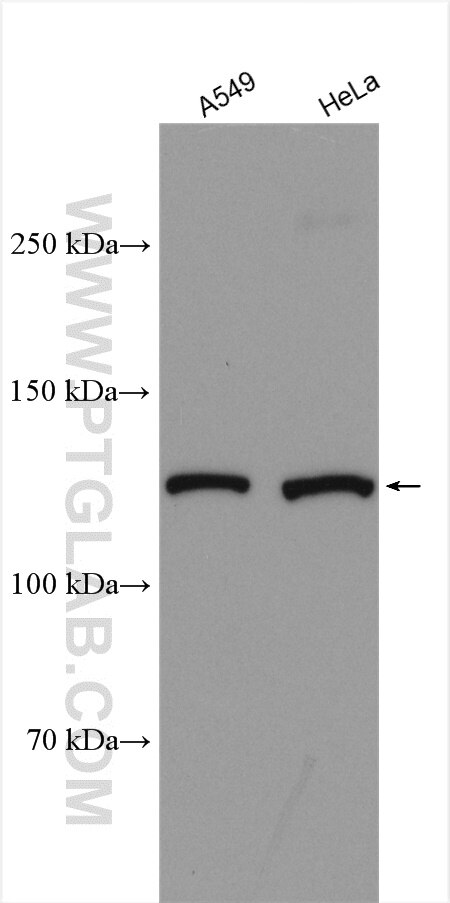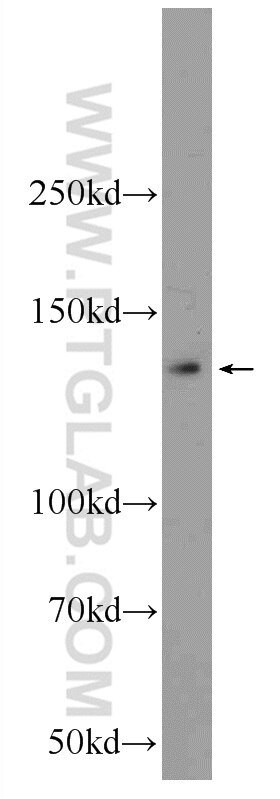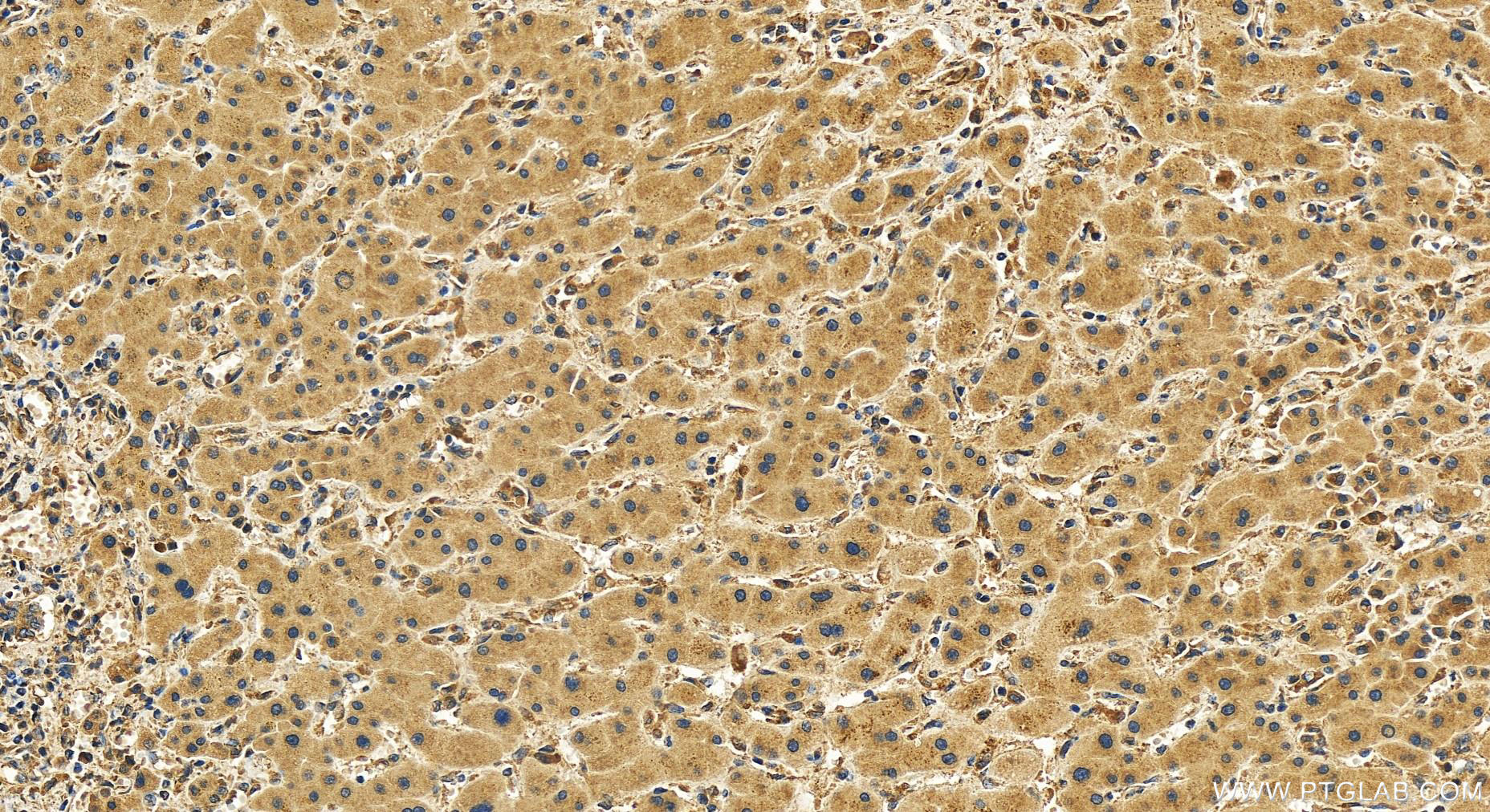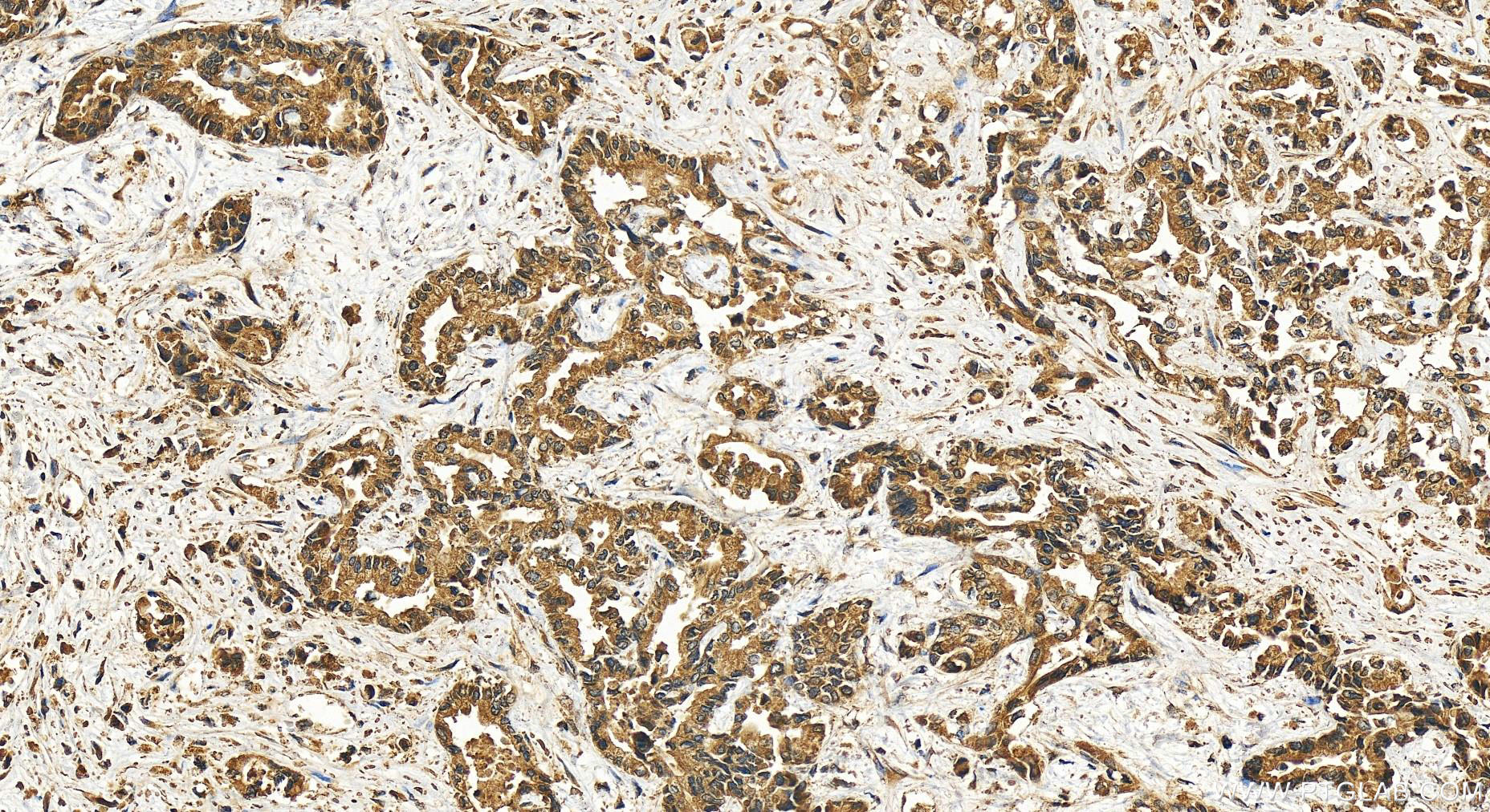Tested Applications
| Positive WB detected in | A549 cells, HeLa cells |
| Positive IHC detected in | human intrahepatic cholangiocarcinoma tissue Note: suggested antigen retrieval with TE buffer pH 9.0; (*) Alternatively, antigen retrieval may be performed with citrate buffer pH 6.0 |
Recommended dilution
| Application | Dilution |
|---|---|
| Western Blot (WB) | WB : 1:500-1:3000 |
| Immunohistochemistry (IHC) | IHC : 1:50-1:500 |
| It is recommended that this reagent should be titrated in each testing system to obtain optimal results. | |
| Sample-dependent, Check data in validation data gallery. | |
Published Applications
| WB | See 4 publications below |
Product Information
51101-1-AP targets KIAA1033 in WB, IHC, ELISA applications and shows reactivity with human samples.
| Tested Reactivity | human |
| Cited Reactivity | human, mouse |
| Host / Isotype | Rabbit / IgG |
| Class | Polyclonal |
| Type | Antibody |
| Immunogen |
Peptide Predict reactive species |
| Full Name | KIAA1033 |
| Calculated Molecular Weight | 136.4 kDa |
| Observed Molecular Weight | 136 kDa |
| GenBank Accession Number | BC104994 |
| Gene Symbol | KIAA1033 |
| Gene ID (NCBI) | 23325 |
| RRID | AB_2881248 |
| Conjugate | Unconjugated |
| Form | Liquid |
| Purification Method | Antigen affinity purification |
| UNIPROT ID | Q2M389 |
| Storage Buffer | PBS with 0.02% sodium azide and 50% glycerol, pH 7.3. |
| Storage Conditions | Store at -20°C. Stable for one year after shipment. Aliquoting is unnecessary for -20oC storage. 20ul sizes contain 0.1% BSA. |
Background Information
KIAA1033, also named as WASH-interacting protein and SWIP, is a component of WASH complex. The WASH complex plays a key role in the fission of tubules that serve as transport intermediates during endosome sorting. KIAA1033 has two isoforms with MW 100 kDa and 136 kDa.
Protocols
| Product Specific Protocols | |
|---|---|
| IHC protocol for KIAA1033 antibody 51101-1-AP | Download protocol |
| WB protocol for KIAA1033 antibody 51101-1-AP | Download protocol |
| Standard Protocols | |
|---|---|
| Click here to view our Standard Protocols |
Publications
| Species | Application | Title |
|---|---|---|
Mol Cell Proteomics Metabolic Enzyme Alterations and Astrocyte Dysfunction in a Murine Model of Alexander Disease With Severe Reactive Gliosis. | ||
Pigment Cell Melanoma Res Loss of strumpellin in the melanocytic lineage impairs the WASH Complex but does not affect coat colour. | ||
Autophagy RAB21 controls autophagy and cellular energy homeostasis by regulating retromer-mediated recycling of SLC2A1/GLUT1 | ||
Immunology SNX17 Regulates Antigen Internalisation and Phagosomal Maturation by Dendritic Cells |
Reviews
The reviews below have been submitted by verified Proteintech customers who received an incentive for providing their feedback.
FH Ioana (Verified Customer) (08-28-2025) | It worked well for Western Blotting, band size as expected and good intensity.
|










